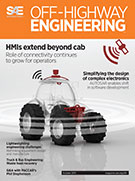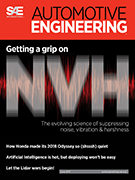Technical Paper
Research on Vehicle Cybersecurity Based on Dedicated Security Hardware and ECDH Algorithm
2017-09-23
2017-01-2005
Vehicle cybersecurity consists of internal security and external security. Dedicated security hardware will play an important role in car’s internal and external security communication. ...For certain AURIX MCU consisting of HSM, the experiment result shows that cheaper 32-bit HSM’s AES calculating speed is 25 times of 32-bit main controller, so HSM is an effective choice to realize cybersecurity. After comparing two existing methods that realize secure CAN communication, A Modified SECURE CAN scheme is proposed, and differences of the three schemes are analyzed.









